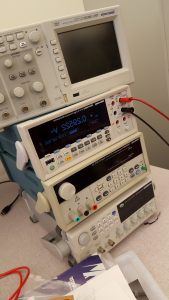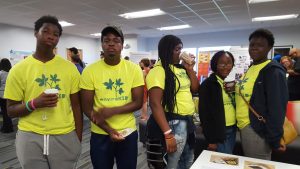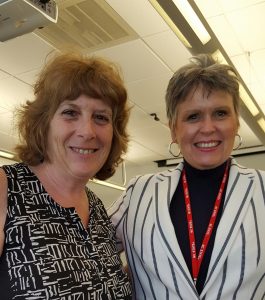
One of my secrete goals for the experience with the Freedm Systems Center actually had to do with an earlier project. Several years ago I wrote a grant and worked with my students to build solar panels to be installed on the roof of our school and used to run the technology in my classroom. The roadblock came when I hit a bureaucratic wall. I was never able to install install these wonderful student constructed panels and felt that I had failed.
Epiphany
I hoped that my experience with FSC might provide insight or contacts that could somehow jump start my closeted (literally) solar project. While charging the remote control cars we constructed, it occurred to me that I had been thinking about the solar panels in light of the grid. I needed to think in terms of the smart grid. This mean instead of going through the school electric grid I need to go around it. I now plan to hang the panels out my window and use power in my classroom. I will probably need to downsize my thinking. To get the power necessary to run the technology (such as the LCD projector or desktop) I would need to include batteries (which need to be vented) and an inverter.
The revival of this idea has been a roller-coaster ride, swinging from: I will be able to use the panels, to this is not a realistic goal. The most recent swing has been the offer of help that came from Landon Mackey, a doctoral student at FSC. We will be working together on possible options for the panels. This was the best case scenario and I look forward to what develops. At the very least, I will know that I have exhausted my resources.
This past week was the last week with the Young Scholars and RET program. I was disappointed that the session about Battery Storage and PowerAmerica had to be cancelled but we all continued to work on a our lessons and posters for the poster presentation on Friday 7/15.
Week of 7/11
As the week progressed we worked further with Landon Mackey on microgrids and PV Design project, designing a PV system for a home, business, or school with Catie McEntee. We continued our work on our posters and developing our perfect pitch. We made informal presentations to the WakeED Partnership and Summer STEM program. On Wednesday we attended the Weekly Webinar. We then explored wind turbines with Erik Schettig and Adam Stevens. As we explored variables in blade design the stars of this activity were the middle school students who joined us.



An additional perk was eating lunch at NCSU Centennial Campus Oval, a LEAD certified food court. Campus food has come a long way since my day.

The Tour of the FREEDM roof PV system was postponed due to the extreme heat but we were able to pick this up on Friday afternoon. Even though it was still extremely hot we braved the heat to roof to see the very “cool” panel array. This for me was one of the high points (no pun intended).
On Thursday we visited the Assist Program. It was great to see fellow Kenan Fellows busily engaged creating wearable devices. We all met again on Friday for the Poster Presentations at NCSU with ASSIST. This was a great opportunity to sell my plan. This was great fun and an opportunity to get feedback from my fellow Kenans, professionals and the public.
Annie Polashock and Brooke Woodard posed for a fashion shot in their solar hat. But the best feedback came from the kids in a group called EnviroKids that were very excited about the project and asked lots of great questions.
Over all this was a wonderful experience and I want to thank the Kenan Fellowship, the Freedom Systems Center, Erik Schettig, Landon Mackey, Catie McEntee, Adam Stevens and my mentor Dr.Pam Carpenter for giving me this mind expanding learning opportunity.
I will continue working at FSC for at 1-2 more weeks while I focus on the possibilities for using my solar panels, build solar chargers (as parts come in) and explore funding options (the ever-present challenge facing educators who want to explore innovative learning opportunities with students). This experience met my goals and beyond. I now have a much clearer understanding of the smart grid and a toolbox full of ideas with direct classroom application on how to make the grid real and relevant to my students. My job now is to share my toolbox with other middle school science teachers and continue to promote authentic learning through Problem based Learning in STEM.










